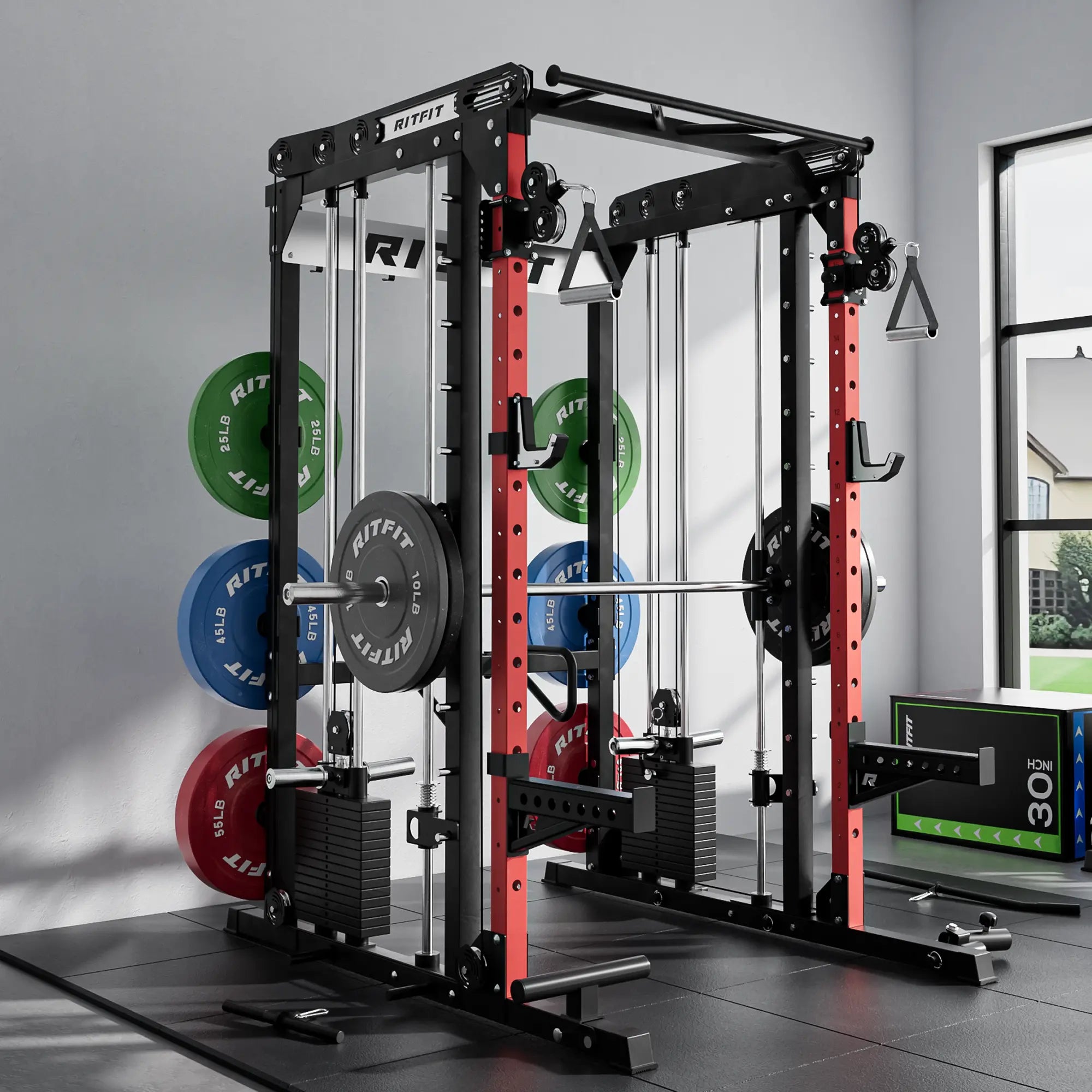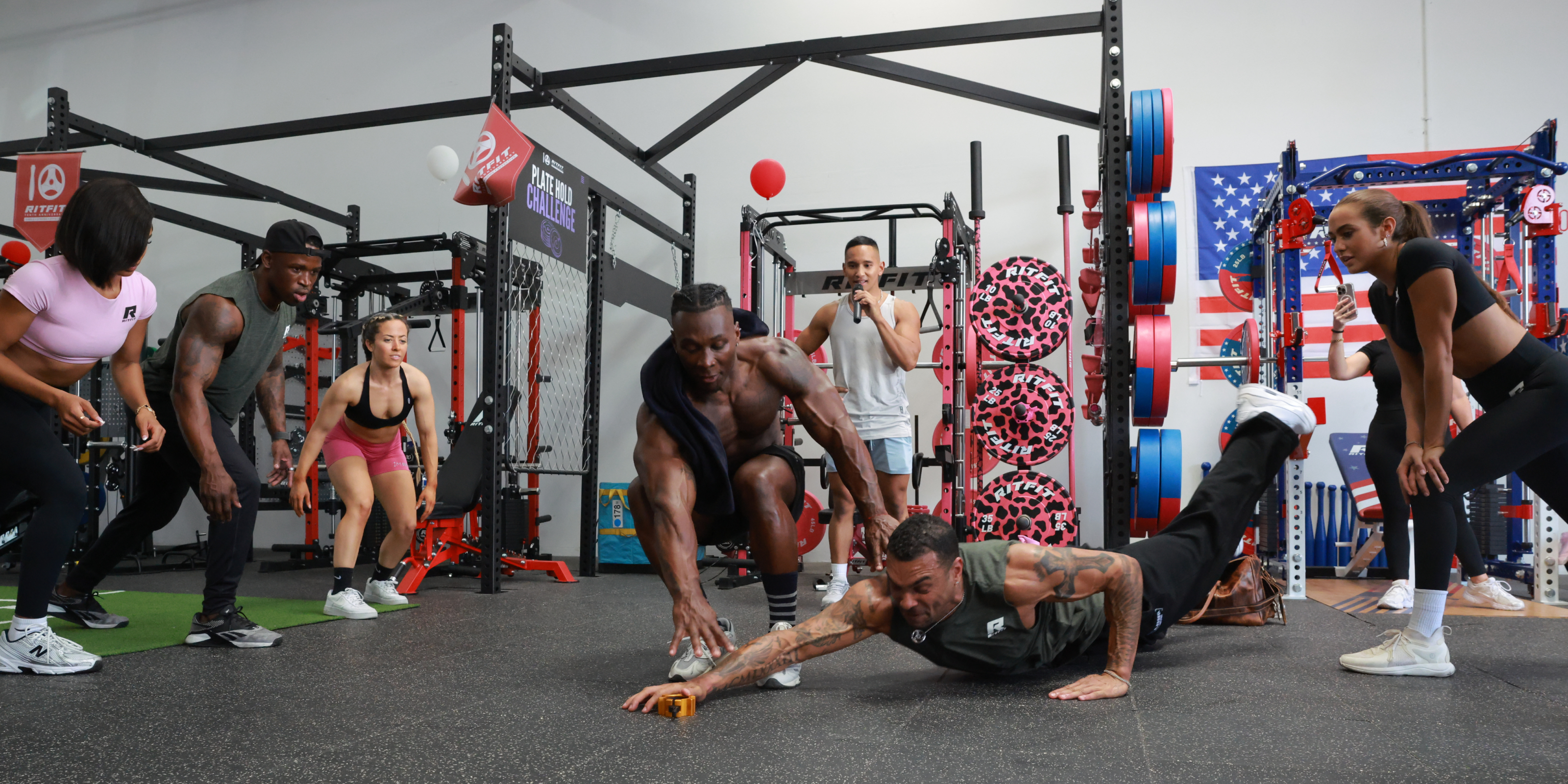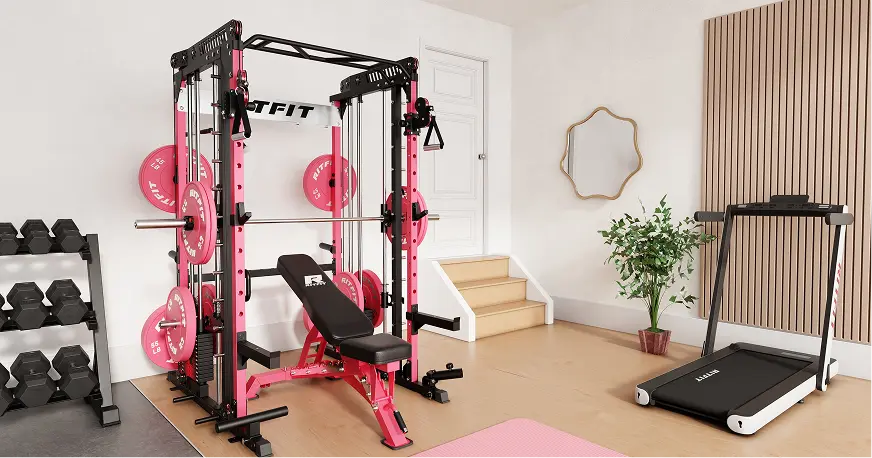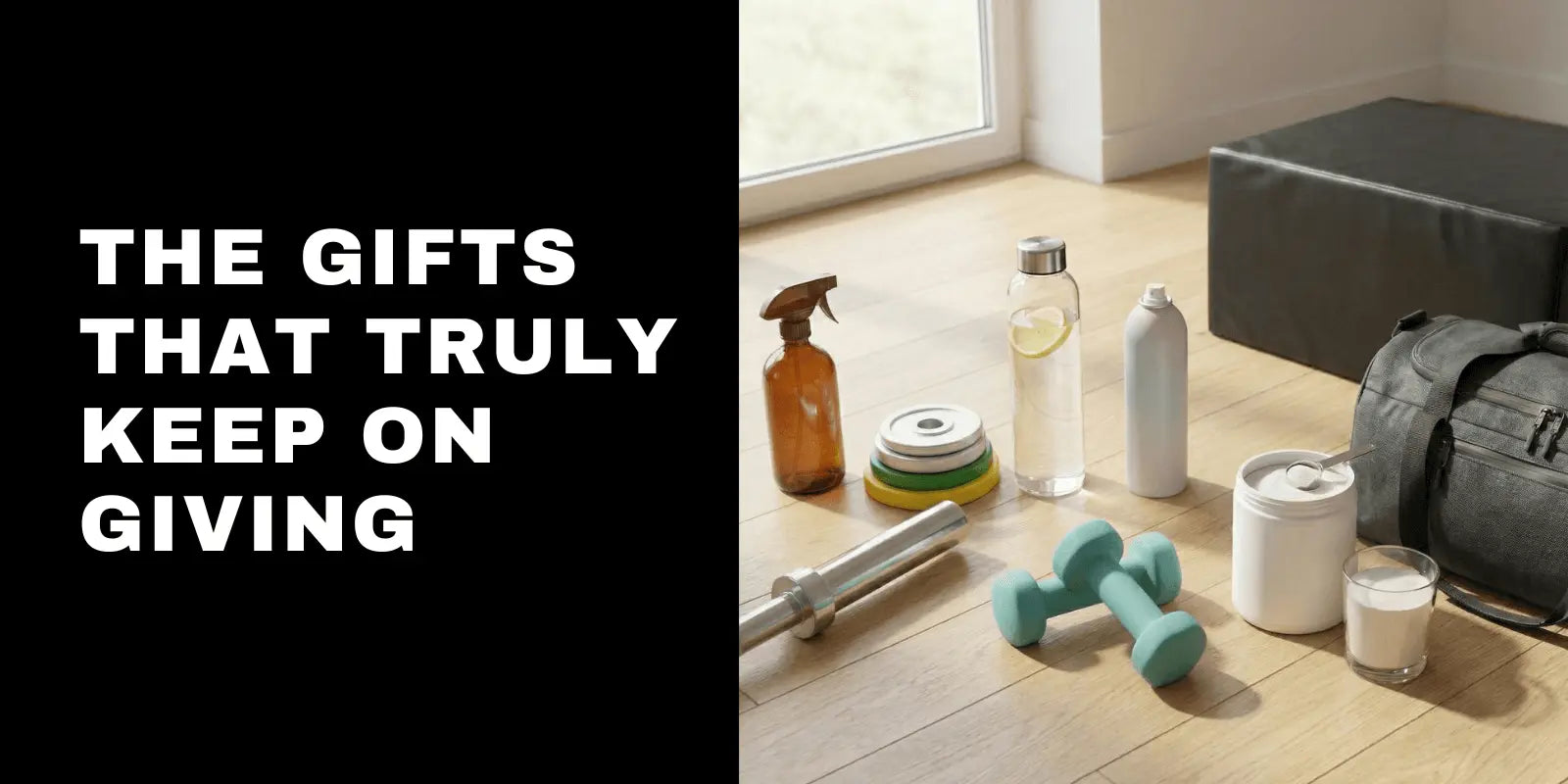Table of Contents
Strong legs do much more than help you lift heavy in the gym. They support your posture, protect your joints, and make everyday tasks like climbing stairs, carrying groceries, or walking long distances feel easier and safer. When your lower body is weak or imbalanced, simple movements can feel difficult, and your risk of overuse injuries goes up.
If you want powerful, athletic, and well-defined legs without always loading your spine like a heavy barbell squat, the Bulgarian split squat should be near the top of your training list.
This single-leg squat variation targets many of the same muscles as back and front squats, but it places a stronger emphasis on your quads and glutes while challenging your balance and hip stability.
In this guide, you will learn exactly how to do the Bulgarian split squat with safe, effective form, which muscles it trains, how to program it for strength and muscle growth, plus smart variations and alternatives you can plug into your routine.
What is the Bulgarian Split Squat?
The Bulgarian split squat is a rear-foot-elevated split squat. One leg works on the floor as the “front” leg while the other leg rests on a bench, box, or step behind you. The front leg does most of the work, while the back leg acts like a kickstand to help you balance.
Because you train one leg at a time, this exercise is considered a unilateral, knee-dominant lower-body movement. It primarily trains your quadriceps, glutes, and hamstrings while also challenging your hip stability and core control.
The Bulgarian split squat is often recommended for athletes and intermediate lifters who already have decent balance and leg strength. However, beginners can absolutely learn it too by starting with bodyweight only, using a lower step instead of a tall bench, and holding on lightly to a stable object for support.
Proper Bulgarian Split Squat Form & Technique
How to Do a Bulgarian Split Squat
How to Do a Bulgarian Split Squat
Use this step-by-step sequence to learn clean technique before you ever add heavy weight.
Step 1: Set up your bench and stance
Place a sturdy bench or box behind you, roughly at knee height or slightly lower. Stand about two to three of your own foot lengths in front of the bench with your feet hip-width apart, not on a tight rope. This wider stance will help you stay stable.
Step 2: Place your back foot
Shift your weight to your front leg, then gently place the top of your back foot (laces down) or your toes on the bench, depending on ankle comfort. Keep both hips facing straight forward instead of letting one hip rotate out to the side.
Step 3: Brace your core and find your balance
Take a small breath in, brace your core as if someone is about to poke your stomach, and keep your chest tall with a slight forward lean from the hips. Your front foot should feel firmly planted with even pressure through the heel, the base of the big toe, and the base of the little toe.
Step 4: Lower with control
Inhale as you bend your front knee and lower your body straight down. Think “drop between your feet” instead of drifting forward. Keep the front knee tracking in line with the toes, not collapsing inward. Lower until your front thigh is roughly parallel to the floor and your back knee is just above the ground or lightly touching it.
Step 5: Drive up smoothly
Exhale as you push the floor away with your front foot. Drive through the mid-foot and heel, squeeze your glutes at the top, and fully extend your hip and knee without locking out aggressively. Maintain control of your balance the entire time.
Coach’s cues for better form:
- “Front leg does the work, back leg is just a kickstand.”
- “Drop straight down, then push the floor away.”
- “Knee in line with toes, chest proud, core tight.”
- “Move slow and smooth, not fast and bouncy.”
Breathing and tempo:
Lower for 2–3 seconds, pause briefly at the bottom, then come up in 1–2 seconds.
Inhale on the way down, exhale as you stand up.
Safety tip:
If you feel sharp pain in your knee, hip, or lower back at any point, reduce your depth, check your stance, or switch to an easier variation such as a regular split squat. If pain persists, stop the exercise and consult a qualified professional before continuing.
Bulgarian Split Squat Common Mistakes
You will only get the full benefit of Bulgarian split squats if you perform them with solid form. Here are common mistakes to avoid and how to fix them.
Staying Unbalanced
Because this is a single-leg exercise with the back foot elevated, it demands a lot of balance and hip stability. Beginners often wobble side to side, hop their front foot around, or grip the floor with their toes because they feel like they might tip over.
To fix it, make sure your front foot, knee, hip, and shoulder stack in a straight line when viewed from the front. Keep your feet hip-width apart, not one directly behind the other. Focus your eyes on a spot straight ahead and keep your core engaged. If you are still very unsteady, hold on lightly to a wall or upright with one hand while you learn the movement.
If your front knee keeps drifting inward, think about gently pushing it slightly out so it tracks over your middle toes.
Putting Too Much Load on the Back Leg
The goal of a Bulgarian split squat is to load the front leg. A common mistake is to “sit” into the back leg, pushing hard into the bench and letting the back knee bear more weight than it should. This not only reduces the training effect on the front leg but can also irritate the back knee.
Instead, think of your back leg as a support stand, not a second working leg. Keep about 80–90 percent of your weight in the front foot. A helpful cue is “front heel heavy.” If you feel a strong stretch and effort in the front quad and glute, you are on the right track.
No Goal
Every exercise in your program should have a clear purpose. With the Bulgarian split squat, you can bias different muscles simply by adjusting your stance and torso angle. Many lifters do the movement without thinking about what they are trying to emphasize.
If you want to target your glutes and hamstrings more, place your front foot a bit farther from the bench, lean your torso slightly forward, and focus on pushing through your heel. If you want to emphasize your quads, keep your stance a little shorter, stay more upright, and let your knee travel over your toes while keeping the heel flat.
Too Much Elevation of the Back Foot
Using a bench that is too high forces your hips into excessive extension and can place uncomfortable stress on your lower back and front hip. This is especially problematic for shorter lifters using standard tall benches.
A good starting point is a surface around knee height. If that still feels too intense or you feel pinching at the front of the hip, start with a lower box, step, or stack of plates and gradually increase height as your mobility and strength improve.
Bulgarian Split Squat Muscles Worked
Quadriceps/Quads
Your quadriceps are the four muscles on the front of your thigh: rectus femoris, vastus lateralis, vastus intermedius, and vastus medialis. In a Bulgarian split squat, they are the primary drivers of the movement, especially in the front leg. They control the descent as you lower and work hard to extend your knee as you stand up.
You will typically feel a strong burning sensation in the front of the working thigh, particularly near the knee, when the quads are doing their job. The rear leg also experiences a stretch across the front of the hip and thigh as it rests on the bench.
Glutes

Your glutes include the gluteus maximus, gluteus medius, and gluteus minimus. In the Bulgarian split squat, the gluteus maximus extends your hip at the top of the movement, while the gluteus medius and minimus help keep your pelvis level and your knee from collapsing inward.
When you push through the heel and fully extend your hip at the top, you should feel a strong contraction in the glutes of the front leg. If you do not, slow down your reps, lean slightly forward from the hips, and focus on squeezing your butt as you stand up.
Hamstrings
The hamstrings run along the back of your thigh and work in opposition to the quads. In Bulgarian split squats, they act as stabilizers and assist with hip extension, especially near the top of the movement. They also help guide the knee and maintain control as you lower your body.
You may feel tension in the hamstrings of both legs: the front leg as it stabilizes the knee, and the back leg as it stretches across the hip and knee.
Core Muscles

Although the core is not the main target, it plays a key supporting role. Your deep core muscles, abdominals, obliques, and the muscles around your spine work together to keep your torso from tipping forward, twisting, or arching excessively.
A well-braced core allows your legs to produce more force with less strain on your lower back. Think “ribs stacked over hips” and avoid overarching your low back as you descend or stand up.
Bulgarian Split Squat Benefits
Improves Balance
The Bulgarian split squat challenges your balance, coordination, and joint control by keeping most of your weight on one leg for the entire set. Over time, this improves ankle, knee, and hip stability, which carries over to running, jumping, change-of-direction sports, and everyday movements like walking on uneven ground.
Because your core must stay engaged to keep you upright, you also gain better overall body awareness and control.
Builds Muscles
Bulgarian split squats are extremely effective for building muscle in your quads, glutes, and hamstrings. The long range of motion, constant tension, and unilateral focus create a strong hypertrophy stimulus without needing massive weights.
You can progress from bodyweight to dumbbells, to barbells, or to a Smith Machine, making it a long-term staple for anyone looking to grow their legs and glutes at home or in the gym.
Enhances Strength & Athletic Performance
Training each leg separately is a powerful way to fix strength imbalances and improve overall performance. Stronger single-leg strength often translates to better acceleration, jumping, and lateral movement in sports.
Research on unilateral training suggests that this type of work can help improve sprinting and change-of-direction performance when programmed alongside traditional bilateral squats and deadlifts.
Less Spinal Stress
Traditional back and front squats are fantastic, but they place a significant load on your spine and require solid shoulder, hip, and ankle mobility. For lifters with lower back sensitivity or mobility limitations, they may not always be comfortable.
Bulgarian split squats let you load the legs heavily with much less weight on the spine, especially when using dumbbells at your sides or a Smith Machine. This makes them an excellent option for people who want strong legs while being kinder to their back, as long as they still move with good form.
Equipment Friendly
One of the biggest advantages of Bulgarian split squats is how little equipment you need. A bench, box, or even a sturdy couch edge plus your own body weight is enough to get started. Over time, you can add dumbbells, a barbell, or use a Smith Machine to progress the challenge.
For home gym users, this means you can build serious leg strength and muscle even in small spaces, especially when paired with a solid adjustable bench and a basic set of dumbbells.
Bulgarian Split Squat vs. Lunge
Both Bulgarian split squats and lunges are excellent lower-body exercises, but they challenge your body in slightly different ways.
The Stability Challenge
In a Bulgarian split squat, your feet stay in a fixed split stance and your back foot stays elevated. This creates a demanding but controlled environment where you can focus on driving through the front leg and maintaining balance in one place.
In a lunge, you step forward or backward with each rep, which adds a dynamic balance and deceleration component. That can be great for athleticism, but it also increases the chance of losing control if you rush or choose weights that are too heavy.
The Mobility Challenge
Bulgarian split squats require sufficient hip and ankle mobility to comfortably lower into a deep position with the back foot elevated. This can be challenging if you have very tight hip flexors or limited ankle dorsiflexion.
Lunges do not require as much hip extension because both feet stay on the floor, which can make them more tolerable for some people. However, both exercises can be adjusted by shortening the stride, limiting depth, or using a smaller range of motion while you work on mobility.
In practice, many lifters benefit from using both: Bulgarian split squats as a primary strength and hypertrophy tool, and lunges as a more dynamic accessory movement.
Bulgarian Split Squat Variations
Dumbbell Bulgarian Split Squat
- Step 1: Stand about 2–3 feet in front of a bench with a dumbbell in each hand, arms hanging naturally by your sides. Keep your feet hip-width apart and your shoulders relaxed.
- Step 2: Place the top of your back foot or your toes on the bench. Square your hips forward and brace your core.
- Step 3: Inhale as you lower your back knee toward the floor, keeping most of your weight in the front leg. Let the dumbbells move straight up and down in line with your front leg instead of swinging forward.
- Step 4: Exhale as you drive through the front foot to stand back up, squeezing your glutes at the top.
This variation is ideal for beginners and home gym users because it is easy to bail out of a rep by simply dropping the dumbbells if needed.
Barbell Bulgarian Split Squat
- Step 1: Set a barbell in a squat rack at about mid-chest height. Step under the bar, place it comfortably across your upper back (not on your neck), and unrack it.
- Step 2: Take a small step back from the rack, then another step to position yourself about 2–3 feet in front of the bench. Place your back foot on the bench as before, keeping your stance hip-width apart.
- Step 3: Inhale, brace your core, and lower under control until your front thigh is roughly parallel to the floor and your back knee is just above the ground. Keep your chest up and your eyes fixed straight ahead.
- Step 4: Exhale as you drive through the front foot to return to the starting position. Perform all reps on one side before switching legs.
Because the barbell raises the overall load and places some stress through the spine, this variation is best for lifters who already have solid technique and core strength.
Smith Machine Bulgarian Split Squat
- Step 1: Set the bar on the Smith Machine at roughly upper-chest height. Step under the bar and position it on your upper back. Stand with your feet hip-width apart, then unrack the bar by rotating the hooks.
- Step 2: Place your back foot on the bench or an elevated surface behind you, and slide your front foot slightly forward so that when you lower, your front knee can stay stacked over the mid-foot.
- Step 3: Lower yourself under control until your front thigh is close to parallel with the floor. Pause briefly at the bottom, then drive up by pushing through your front foot, focusing on your quads and glutes.
It's important to know how to do Smith Machine exercises correctly and in different ways to get the most out of your lower body strength. For instance, doing the Bulgarian Split Squat and the Smith Machine Front Squat together can work your legs more evenly by hitting the quads and glutes in different ways.
Beginners should concentrate on controlled movements and keeping their balance. More experienced lifters can gradually add weight to make the muscles work harder.
Bulgarian Split Squat Alternatives
Lunges
Lunges are a classic alternative that also trains the quads, glutes, and hamstrings. They are usually performed by stepping forward, backward, or walking with each rep. Beginners can start with bodyweight lunges and progress to holding dumbbells or a barbell.
Because the step and landing add impact and require more deceleration, lunges can feel more stressful on the knees and lower back if you take very long strides, let the knee collapse inward, or use weights that are too heavy. Use a controlled tempo, keep the front knee tracking over the toes, and stop the set if you feel sharp joint pain.
Bench Single Leg Hip Thrust
The bench single-leg hip thrust primarily targets the glutes while also involving the hamstrings and hip stabilizers. To perform it, rest your upper back on a bench, plant one foot firmly on the ground, and extend the other leg in the air. Push through the planted heel to lift your hips, then lower under control.
This exercise is an excellent accessory for building strong glutes and improving hip extension strength. It does not load the quads as heavily as Bulgarian split squats, so it works best as a complement rather than a full replacement if your goal is overall leg development.
Single Leg Machine Leg Press

The single-leg machine leg press allows you to train one leg at a time with guided resistance. Place one foot on the platform, keep your lower back flat against the pad, and control the weight through a comfortable range of motion.
Because you can load this movement quite heavy, it is important to use conservative weights, keep your hips and knees aligned, and avoid dropping into the bottom position too fast. When used with good technique, it can be a powerful strength and hypertrophy tool for the quads and glutes, especially as a heavier accessory after Bulgarian split squats.
Bulgarian Split Squats FAQs
Q1: Who should do the Bulgarian split squat?
The Bulgarian split squat is one of the best lower-body exercises for many people, including athletes, general gym-goers, and anyone who wants stronger, more balanced legs and glutes. It is especially helpful if you have noticeable left-right strength differences or limited access to heavy equipment.
If you currently have knee, hip, or lower-back pain, start with easier variations such as bodyweight split squats or supported versions, and check with a qualified healthcare or fitness professional before loading the exercise heavily.
Q2: How often should I do Bulgarian split squats?
Most people do well performing Bulgarian split squats 1–3 times per week as part of their lower-body or full-body workouts. Beginners can start with 1–2 sessions per week, leaving at least one rest day between sessions. Intermediate lifters may use them twice per week with different set and rep schemes, such as heavier, lower reps on one day and lighter, higher reps on another.
If your legs remain extremely sore for more than 48–72 hours, reduce the number of sets or sessions until your recovery improves.
Q3: How many Bulgarian split squats sets and reps should I perform?
Here are general guidelines you can use, adjusting based on your goals and experience level:
- For Strength: 3–5 sets of 4–6 controlled reps per leg with relatively heavy weight, resting 90–180 seconds between sets.
- For Balance and Control: 2–3 sets of 8–10 slower reps per leg, focusing on perfect technique and stability rather than heavy load.
- For Hypertrophy (Muscle Growth): 3–4 sets of 8–12 reps per leg with moderate weight, leaving 1–3 reps in reserve at the end of each set.
Always warm up with lighter sets first, and stop your working sets if your form breaks down or you feel sharp joint pain.
Conclusion
The Bulgarian split squat is a powerhouse exercise for building strong, stable, and athletic legs. When performed with good form, it can significantly improve the strength and flexibility of your quads, glutes, and hamstrings while placing less stress on your spine than many heavy barbell squat variations.
By starting with bodyweight, focusing on controlled movement, and gradually progressing to dumbbells, barbells, or the Smith Machine, you can tailor this exercise to almost any fitness level. Variations and alternatives like lunges, hip thrusts, and single-leg leg presses let you customize your training while keeping the Bulgarian split squat as a key anchor in your lower-body routine.
Whatever variation you choose, prioritize clean technique, pain-free range of motion, and steady progression. Your legs, joints, and overall performance will thank you.

















